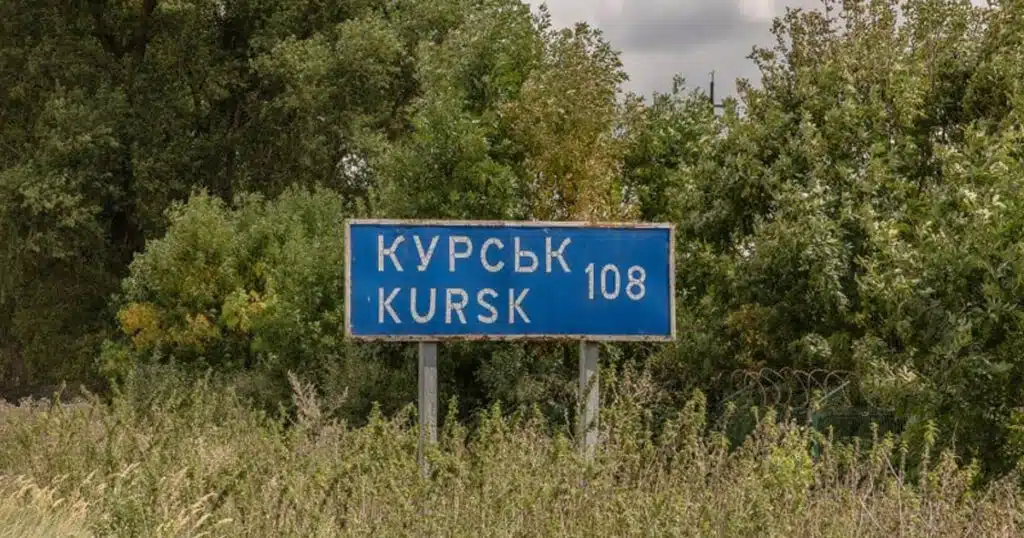
Ukraine, Kursk, and the Importance of Lines of Operation in History
Ukraine’s incursion into the southern Kursk region of Russia has been a bold and unexpected stroke in a lengthening war, baring certain similarities to other bold operations throughout history. Russia has been slow to respond, though some response is surely coming. Given the audacity of the invasion, and the larger implications of Ukrainian forces on his territory, Russian President Vladimir Putin is not likely to be satisfied with merely containing this incursion.
And so, if Ukraine wishes to maintain its military and political advantages, and remain across the border, it must preparing for a sizeable Russian counteroffensive. Tactically and operationally, holding a central position that uses interior lines of communication will be crucial to surviving and holding the ground it currently occupies in Kursk. To do so, Ukraine should consider some historical examples of the benefits of interior operational lines, as well the inherent vulnerabilities of exterior lines.
The concept of interior and exterior lines represents the routes over which information, supplies, and reinforcements travel during military operations. Interior lines are often used by defenders, and emanate from a central point, thus making them short and safe. Exterior lines, on the other hand, exist outside the central point, and must cover more distance to concentrate forces at strategically decisive points. Today in Kursk, Ukraine is operating on interior lines and Russia on exterior lines which so far has proven advantageous to Ukraine.
The Battle of Gettysburg, in July, 1863, during the American Civil War, is an ideal illustration of the tactical advantages of a central operational position with shortened lines. The Union victory in south-central Pennsylvania was, in large part, down to its commanders quickly recognizing the benefits offered by the terrain, and rapidly securing its defensive advantages.
General Robert E. Lee’s risky foray into Union territory in summer 1863 was motivated by practical military and political concerns. First, he needed bountiful farmland that could easily support his army. Second, as with the possible Ukrainian motivations in Kursk, Lee hoped to sow chaos and disorder in the north. Finally, Lee was moved to action because the war was exhausting the South, and the Union Army was likely to launch a new offensive, and soon.
At Gettysburg, however, Lee was unable to secure the interior lines that he had become accustomed to in battle. The Union Army—the Army of the Potomac—held the central position, giving it three major tactical advantages. First, General George Meade’s troops had crucial breathing space. The Union positions on high ground around town were tactically advantageous, making a compact defensive line. Along with the inherent benefits defenders have, security and ease of resupply was also better assured. Such considerations will be important for Ukrainian forces as well, if they choose to stay in Kursk because they can more easily and quickly move their combat forces in Kursk to respond to Russian attempts to evict them.
Interior-exterior lines are distinctions in time as much as they are distinct in space; shorter interior lines allow for a quicker operational tempo. Given that Ukraine is already outnumbered by Russian forces in Kursk, the ability to position firepower and manpower rapidly, in order to counter this deficiency, will be crucial. Choosing an advantageous defensible central position will allow Ukrainian forces to retain the advantages offered by favorable terrain and an adequate road network.
Finally, interior lines allow militaries to take advantage of blunders by the enemy. Such was the case at Gettysburg, for the Union forces, when Lee’s army committed costly delays and mistakes. As the armies converged on the first day of battle, the positioning of Lee’s army north of town on its exterior lines required his forces to converge from multiple directions, using limited roads, and leading to time-consuming bottlenecks.
The time spent dithering and arraying Lee’s forces on exterior lines allowed the advance elements of Meade’s Union army, which consolidated its reinforcements to take up new positions. Given recent Russian blunders, this history seems particularly relevant to Ukrainian forces. If recent examples of friendly fire, indecision, soldiers surrendering, and wasted resources also characterize a Russian counteroffensive, then a Ukrainian force taking up a central position within Kursk could take full advantage of future Russian gaffes.
Tactical successes can have larger implications, too. Lee struggled to overcome the difficulties that his exterior lines presented. In the end, his army’s—the Army of Northern Virginia—loss at Gettysburg dashed Confederate hopes of a peace that would be favorable to the rebellious states.
Similarly, the French Imperial Army’s invasion of Russia, in 1812, provides another example of how exterior lines can contribute to operational and strategic vulnerabilities. Napoleon’s theory of warfare relied on the maxim that an army’s line of communication should be preserved at all costs. The Grande Armée had been remarkably successful using short and safe interior lines. However, after invading Russia in June of that year, with roughly 500,000 men, Napoleon began to stretch his operational lines. His advance eastward outran transport columns that were unsuited to Russia’s undeveloped roads. Cavalry and infantry became poorly supplied as distances to supply magazines lengthened. Russian raids and ambushes on the extended lines further weakened the network. Starvation and disease took hold, increasing death rates in an army that was reduced by one-third before fighting a major battle.
French forces captured Moscow, much of it destroyed by either a deliberate or inadvertent conflagration, but weeks passed and the Russians refused to come to terms. The coming winter presented dangers both military and political. By early October, Napoleon’s forces turned to retreat to France. After initially intending to make a long detour through areas that could provision his army, he decided instead on a more direct route, through war-ravaged territory.
By early November, French forces were heavily attritted. And this was before the first snow and bitter cold hit. Russians fell upon the vulnerable military in intermittent fighting throughout its retreat west. Losses left the Grande Armée crippled by mid-November. Only 120,000 of the initial 500,000 men returned to France at the failed invasion’s end.
Ukraine’s Russian incursion will surely not result in a disaster of such scale, but it would still be wrong for its military forces to extend the invasion too far into Russia, lest the military and political benefits it has so far enjoyed being undercut by operational calamities. If, on the other hand, Ukraine stays in Kursk and fights, a large battle may be in the offing. Another brutal winter will soon descend. Given their experience in previous years fighting during the cold months, along with historical insights of operational problems such as such as the Grande Armée’s invasion, the Ukrainians should begin consolidating their positions now, rather than continuing the incursion deeper into Russia.
With Russian forces weakened and disorganized, Ukraine has the unique opportunity to choose where to mount such a stand. In modern maneuver warfare, consolidation offers a more effective integration of warfighting functions. It will also allow for greater resilience and flexibility in the face of a potentially determined Russian response.
The Ukrainian incursion of Kursk is a complex operation. If its leaders plan to maintain forces in Russia, rather than retreating home, then they might benefit from the insights offered by the historical examples above. Ukraine should prepare now for a Russian counteroffensive. appear likely to remain in Kursk due to the buffer zone it creates. The first and most crucial step would be to hold a central position at a decisive point, with tactically advantageous lines of communication. This, as history has shown, creates operational and strategic leverage.
Adam Givens is an Associate Policy Researcher at RAND.
Gian Gentile is the Associate Director at RAND’s Army Research Division.
This article was originally published by RealClearDefense and made available via RealClearWire.



